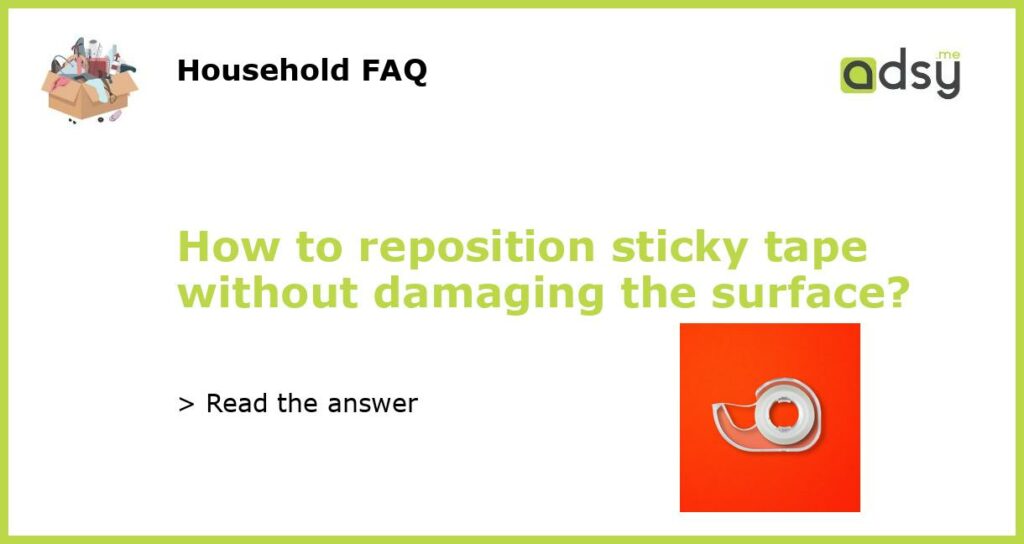Understand the Stickiness of Sticky Tape
Before we delve into the techniques to reposition sticky tape without damaging the surface, it is important to understand the stickiness of the tape itself. Sticky tape uses adhesive to adhere to surfaces, but the strength and type of adhesive can vary depending on the brand and purpose of the tape.
Typically, sticky tape comes in two main types of adhesive – removable and permanent. Removable adhesive is designed to be easily removed without leaving residue or damaging the surface, while permanent adhesive is intended to be long-lasting and may leave residue or damage when removed.
Knowing the kind of adhesive on your sticky tape can help determine the best approach to repositioning it without causing any harm.
Gently Peel off the Sticky Tape
If you need to reposition sticky tape without damaging the surface, the first step is to gently peel off the tape. Start by finding a loose edge and slowly lift it up, making sure not to pull or tug too hard. Applying too much force can cause the tape to stretch or tear, making it difficult to remove without leaving residue.
If the tape is not coming off easily, try heating it with a hairdryer on low heat. The heat will soften the adhesive, making it easier to peel off. However, be cautious not to overheat the surface or the tape, as it can cause damage.
Use Adhesive Removers or Household Products
If the sticky residue remains on the surface even after peeling off the tape, there are various adhesive removers or household products that can help clean it without damaging the surface.
One effective adhesive remover is rubbing alcohol. Dab a cloth or cotton ball with rubbing alcohol and gently rub the residue until it comes off. Ensure you test a small, inconspicuous area of the surface first to make sure it doesn’t cause any discoloration or damage.
In addition to rubbing alcohol, other household products such as vinegar, cooking oil, or peanut butter can also help remove sticky residue. Apply a small amount of the chosen product to a cloth and gently rub the affected area until the residue lifts off. Remember to thoroughly clean the surface afterward to remove any oily or greasy residue left behind.
Consider Using Tape Alternatives
If you frequently find yourself needing to reposition tape and are worried about damaging surfaces, consider using tape alternatives that are designed to be removable and leave no residue.
One popular alternative is painter’s tape, which is specifically designed for temporary use and easy removal. It is commonly used in painting projects to create straight lines without damaging the underlying surface. Painter’s tape can be applied and removed without leaving residue or causing any damage.
Another option is washi tape, a decorative adhesive tape that comes in various patterns and colors. Washi tape is known for its repositionability and can be easily lifted off surfaces without causing any damage or leaving residue.
Prevention is Key
In order to avoid the need to reposition sticky tape, it is best to take preventive measures to protect surfaces. Some strategies to consider include:
- Using adhesive-free alternatives such as hooks, clips, or magnets to hang items rather than tape.
- Applying masking tape or painter’s tape to the surface before sticking on the sticky tape. This provides an additional layer of protection and makes it easier to remove the tape without damaging the underlying surface.
- Reading the instructions or labels of the sticky tape to determine if it is safe for the desired surface. Some tapes are specifically labeled as safe for use on certain materials, while others may be more prone to damaging surfaces.
By following these preventive measures, you can minimize the chances of needing to reposition sticky tape and avoid any potential damage to surfaces.






